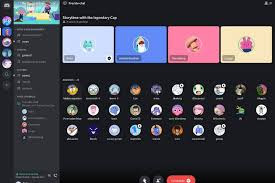The Rise of Discord Gaming Channels: A New Era of Community and Connection
.jpg)
In the ever-evolving landscape of online gaming, one platform has emerged as a pivotal hub for gamers worldwide: Discord. Initially launched in 2015, Discord has swiftly transformed from a simple voice chat service into a vibrant social network, specifically tailored for gamers. Today, it stands as a cornerstone of gaming culture, offering a multifaceted platform for communication, community-building, and collaboration. Let’s dive into the world of Discord gaming channels and explore why they have become indispensable to the gaming community. What Are Discord Gaming Channels? At its core, a Discord gaming channel is a space within Discord’s broader ecosystem dedicated to specific gaming communities or interests. These channels can range from small, tightly-knit groups of friends to large, sprawling communities of thousands of members. Within these channels, users can chat via text, voice, or video, share media, and participate in live gaming sessions. The platform’s versatility a...
.jpg)
.jpg)
.jpg)


.jpg)

.png)
.jpg)
